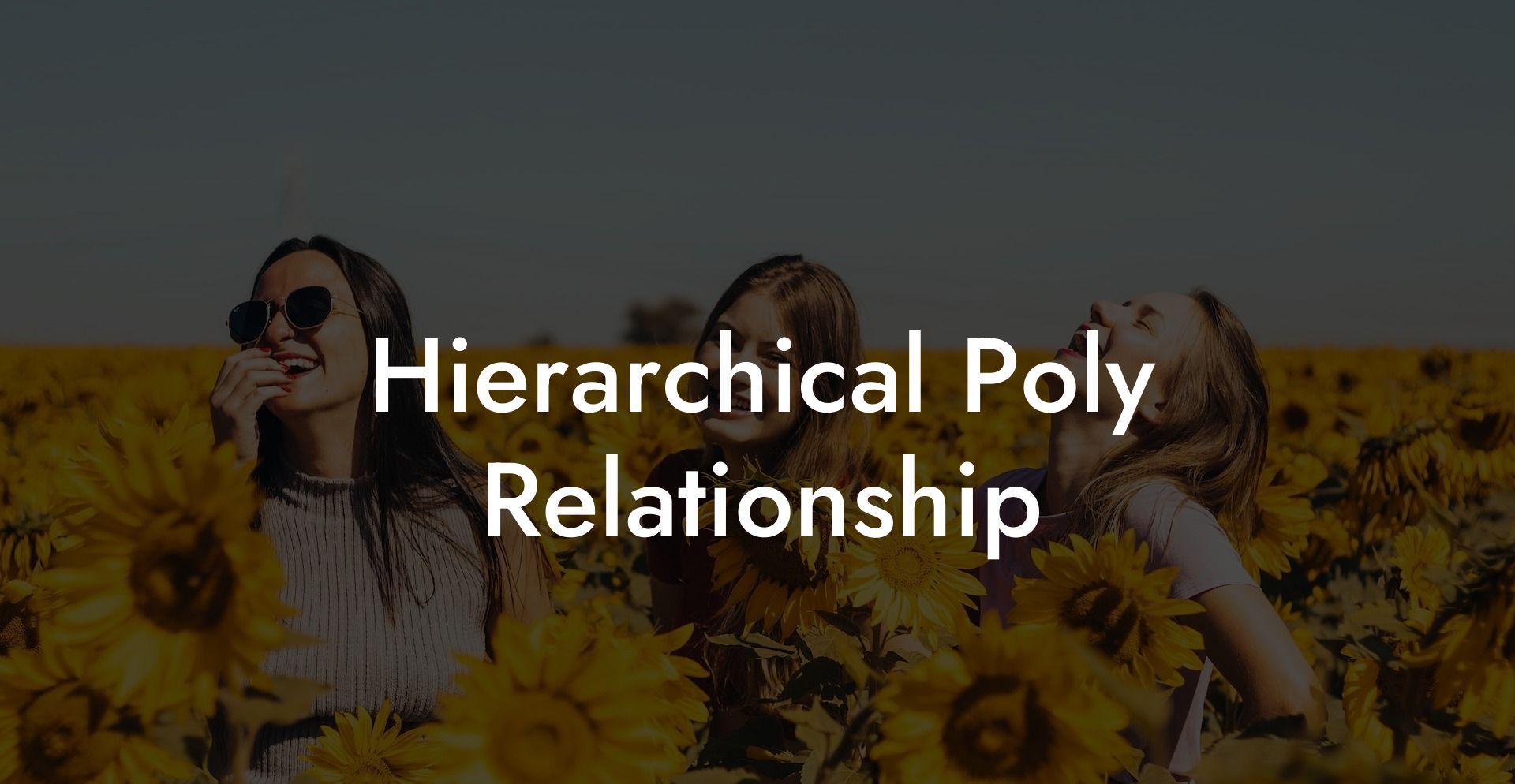Polyamory, a form of ethical non-monogamy, comes in many shapes and sizes. One such structure that has gained popularity in recent times is the hierarchical poly relationship. But what does it mean, and how does it work? In this guide, we'll delve into the world of hierarchical polyamory, exploring its benefits and challenges, and providing you with a realistic example for better understanding.
Hierarchical Poly Relationship Table of Contents
Defining Hierarchical Polyamory
Hierarchical polyamory is a form of ethical non-monogamy where relationships are organized into a hierarchy based on importance, commitment, or other factors. This hierarchy can look different from one person to another, but common examples include having a primary partner (usually a spouse or long-term partner) and secondary partners (other romantic or sexual relationships).
Primary Partners
A primary partner is often considered the top priority in a hierarchical poly relationship, and they typically share a high level of emotional and practical commitment. This can include living together, sharing finances, raising children, making significant life decisions together, and planning for the future.
Secondary Partners
Secondary partners are other relationships that someone in a hierarchical poly arrangement might have. These relationships are characterized by less emotional or practical commitment compared to the primary partnership. However, they can still be meaningful romantic or sexual connections and provide a different kind of emotional support and companionship.
Benefits and Challenges of Hierarchical Poly Relationships
Benefits
- Clear boundaries and expectations: The hierarchical structure can help establish clear boundaries and expectations for each relationship, making it easier to manage multiple connections.
- Prioritizing life responsibilities: Hierarchical poly relationships can help people balance the demands of life and their various relationships by designating which partnerships need the most attention and time.
- Emotional security: Knowing that there is a primary partnership can provide a sense of emotional security and stability for some individuals, reducing feelings of jealousy or insecurity that can arise in non-hierarchical poly relationships.
Challenges
- Secondary partner inequality: There can be a risk of secondary partners feeling undervalued or unimportant in a hierarchical poly relationship, leading to resentment or dissatisfaction.
- Rigid structure: Some people might find the hierarchical structure too rigid, restricting the fluidity and growth of their relationships.
- Maintaining the hierarchy: Maintaining the hierarchy can require constant communication and negotiation, making it more complex than other forms of polyamory.
Hierarchical Poly Relationship Example:
Emma and Mark have been married for ten years and have two children together. They identify as polyamorous, and their relationship is organized hierarchically. Emma and Mark are each other's primary partners, and they prioritize their time and resources to support their family and marriage.
Emma has a secondary partner named Josh, whom she sees once or twice a week. Although Emma cares for Josh and values their connection, she and Mark have agreed that their marriage and family take precedence.
Mark also has a secondary partner, Anna. They share a strong emotional bond, but they both acknowledge that their individual primary commitments to their respective families come first.
Emma, Mark, Anna, and Josh navigate their hierarchical poly relationships through open communication to ensure that everyone's needs and expectations are met.
Hierarchical poly relationships may not be for everyone, but they offer a unique way to balance multiple relationships while maintaining some semblance of order and priority. By understanding the structure of hierarchical polyamory, exploring its benefits and challenges, and drawing from real-world examples, you can determine if this form of non-monogamy is right for you and your relationships.
If you found this guide helpful, feel free to share it and explore other resources on The Monogamy Experiment. We aim to provide a comprehensive and all-inclusive space to learn about ethical non-monogamy, monogamy, and polyamory, and the many configurations and forms it can take.













